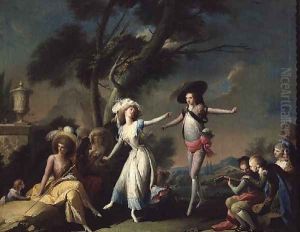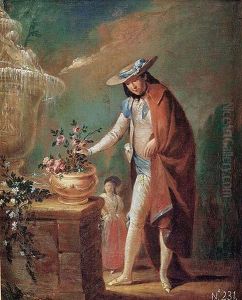Jose Camaron Paintings
José Camarón y Boronat, born on January 3, 1731, in Segorbe, Spain, was a distinguished Spanish painter and engraver, recognized for his significant contributions to the Rococo movement in Spain. Coming from a family with artistic background, his father, Nicolás Camarón, was also a painter, which provided José with an early exposure to the arts. This familial environment nurtured his talents, leading him to pursue formal training in Valencia under the tutelage of Felipe Pablo de San Leocadio, a prominent painter of the time.
Camarón's career flourished in Valencia, where he quickly became a central figure in the city's artistic scene. His work was characterized by its delicate and graceful style, typical of the Rococo period, with a preference for religious themes, portraits, and mythological scenes. In addition to his paintings, Camarón was also renowned for his skill in engraving, contributing to the dissemination of his and others' works through printed media.
In 1768, José Camarón was appointed as the director of the newly established Royal Academy of Fine Arts of San Carlos in Valencia, a position that underscored his influence and leadership in the artistic community. His role at the academy was pivotal in shaping the curriculum and guiding the next generation of Spanish artists, promoting the principles of the Enlightenment alongside the artistic trends of the period.
Throughout his career, Camarón received numerous commissions from the Church and the Spanish nobility, which allowed him to work on a variety of projects, including altar pieces, frescoes, and illustrations for books. His religious works, in particular, are noted for their emotional depth and the use of light, which added a dramatic quality to his compositions.
José Camarón y Boronat passed away on July 14, 1803, in Valencia. His legacy is preserved through his contributions to the Spanish art scene of the 18th century, his influence on the Royal Academy of Fine Arts of San Carlos, and his enduring works that continue to be celebrated for their beauty and artistic merit.

